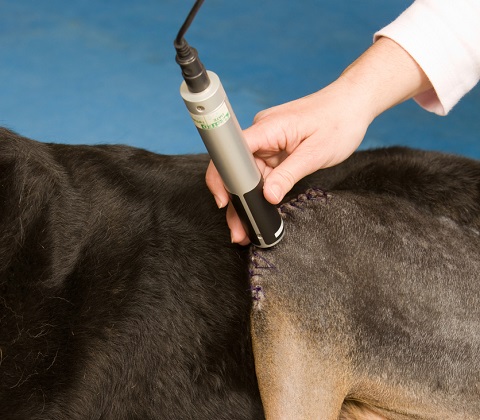
Laser therapy is an innovative treatment that has become popular in recent times among veterinarians. Similar to acupuncture, massage, and other acupuncture, laser treatment can be used in conjunction with or in place of medication to manage pain, inflammation, and wound healing.
Therapeutic lasers use light waves of a specific wavelength to alteration of cellular and tissue physiology. Light absorbed by cellular components stimulates electrons and activates cells to promote growth, proliferation, migration, and repair.
The type and depth of tissue that responds to laser therapy depend on the wavelength of the light that is delivered. Most therapeutic lasers use red or near-infrared light, which has a wavelength of 600–1070 nanometres. Whereas green, blue, and violet light, which have lower wavelengths, are becoming more popular. Laser beams of lower wavelengths are absorbed by superficial tissue, such as the skin, whereas beams of higher wavelengths penetrate deeper into muscles and bones.
The main benefits of laser therapy in dogs include decreased inflammation, decreased pain, and improved wound healing.
Laser therapy is used to treat:
- Chronic arthritis
- Surgical incisions
- Tendon and ligament injuries
- Traumatic injuries
Laser therapy is particularly useful for dogs with limited medical treatment options, such as:
- Liver disease and unable to take medications;
- Older dogs with diminished organ function
During a treatment session, the handheld laser wand is slowly moved back and forth over the damaged tissue, producing a warm, pleasant sensation that most dogs seem to enjoy and find relaxing.
